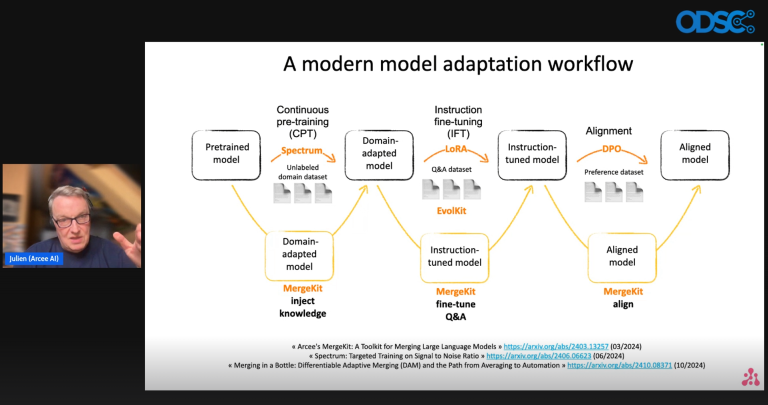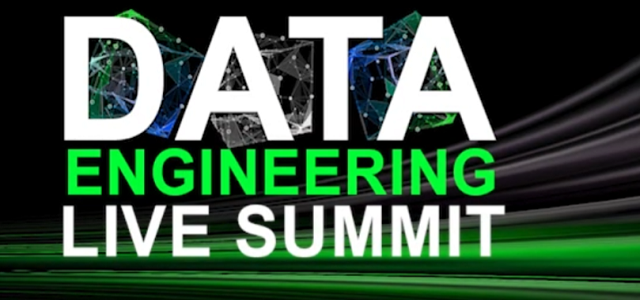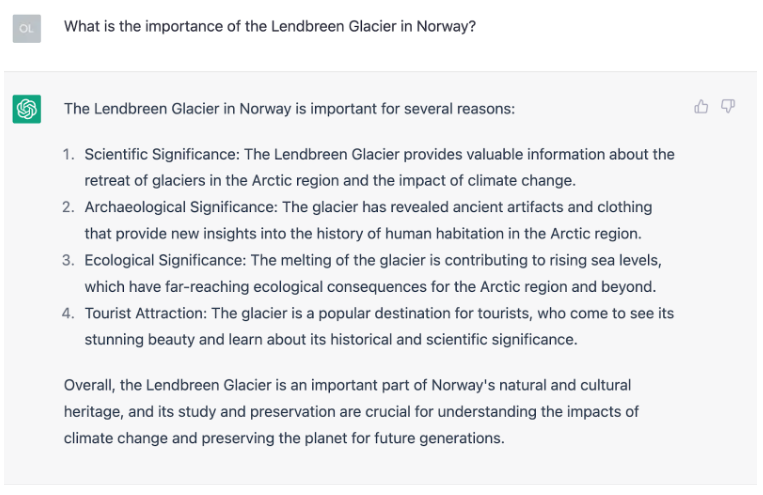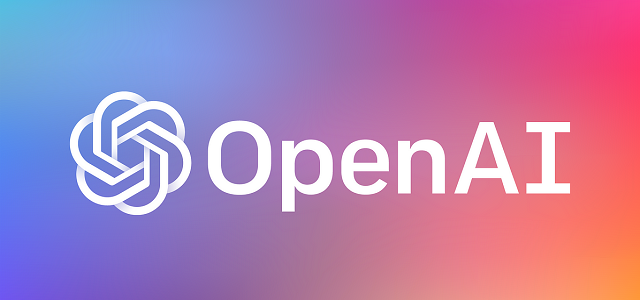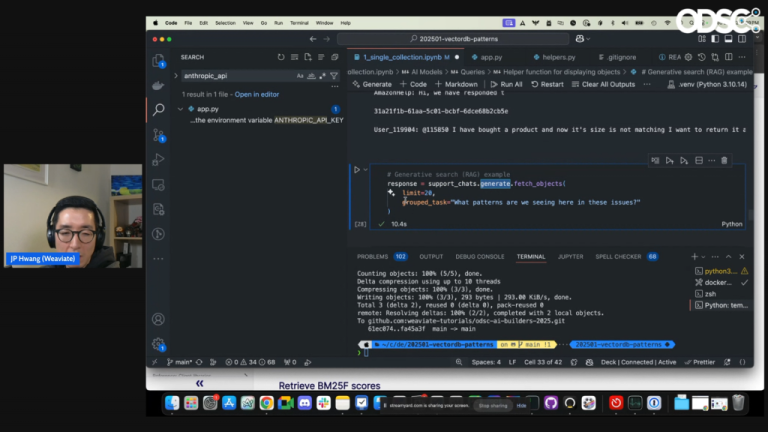Navigating the Transition: A Comprehensive Guide from Data Science to Data Engineering
Data engineering is an exploding field with a substantial demand for proficient data engineers. If you’re currently working as a data scientist and contemplating a shift to data engineering, you’re in luck! Numerous skills that data scientists possess are easily transferable to the realm of data engineering. This article will delve into the pathway for a data scientist to successfully transition into a data engineering role.
What is a Data Engineer?
A data engineer plays a pivotal role in crafting and upholding the infrastructure that stores and processes data, which can vary widely, mostly comprising both structured and unstructured data. Importantly, they do not work in isolation; data engineers collaborate closely with data scientists to design and deploy data pipelines, ensuring smooth data flows and minimal disruptions for the data team. Furthermore, they partner with software engineers to guarantee the scalability and reliability of the data infrastructure, ensuring that data is accessible while maintaining appropriate access controls.
How to Become a Data Engineer
If you’re a data scientist eager to shift gears, you might be wondering how to embark on this transition. While there are plenty of resources online, the journey can be summarized into several vital steps. Let’s take a closer look at each of these key steps to help you forge a path toward becoming a data engineer.
Assess Your Current Strengths in Data Science
As with any professional transition, it’s beneficial to evaluate your current strengths in data science. Typically, data scientists excel in areas like Python, R, statistics, machine learning, and data analysis. These competencies can be incredibly beneficial in data engineering, particularly for data wrangling, model deployment, and comprehending data pipelines. However, it’s essential to understand that these skills will be utilized differently in the context of data engineering.
For instance, if you’re an adept Python coder, you might be familiar with various packages, libraries, and frameworks that can be seamlessly integrated into your new role as a data engineer, but applied in different ways. Therefore, take the time to inventory your skills and perceive how they align with the demands of data engineering.
Identify Your Knowledge Gaps in Data Engineering
While you may possess a robust set of transferable skills, it’s crucial to recognize that data scientists and data engineers perform distinct roles. As you evaluate your skill set, start pinpointing the areas where you need to broaden your knowledge to transition effectively into data engineering. This might encompass areas such as SQL, database design, data warehousing, distributed systems, cloud platforms (AWS, Azure, GCP), and understanding data pipelines.
Dive Into Cloud Technologies
Familiarity with cloud and hybrid platforms is becoming increasingly essential in data engineering. Understanding how various cloud platforms function and how to leverage them for data storage and processing is vital. This expertise is especially relevant as remote work and global teams become more prevalent across many industries.
It’s imperative to create and maintain appropriate infrastructures while ensuring robust data governance and access protocols to avoid compliance issues stemming from unauthorized access. Many cloud platforms offer sandbox accounts and free educational resources to help you get started. For instance, Microsoft Azure allows users to navigate through its ecosystem and provides on-site training for all experience levels, along with certifications that hold industry recognition.
Master ETL Processes
ETL (Extract, Transform, Load) is a fundamental process in data engineering for transferring data from various sources into a destination, typically a data warehouse or data lake. Mastering ETL techniques is crucial as it aids organizations in consolidating data, cleaning it, and preparing it for analysis, which supports informed decision-making. There are numerous ETL tools available today, ranging from commercial products to open-source solutions and custom-built options.
Stay Updated on Data Engineering Trends
Staying abreast of the latest trends in data engineering is essential. The field is ever-evolving, and being knowledgeable about current developments can give you a competitive edge. Follow relevant influencers on LinkedIn, subscribe to informative newsletters, and consume articles that cover emerging topics in data engineering. Engaging in conferences can also provide excellent networking opportunities with peers and thought leaders, imparting insights into industry advancements.
Expand Your Training
Getting additional training is paramount if you’re looking to delve deeper into data engineering. As the data science landscape rapidly evolves, new tools and methodologies continuously emerge. By keeping your skills updated and applying them in innovative ways, you’ll stay ahead in your career.
Numerous options exist for further training in data engineering, from online courses and workshops to boot camps. These opportunities can be conducted remotely, in person, or via a hybrid format. It’s essential to align your learning with your career goals. If, for instance, you need to improve your expertise in cloud platforms, enrolling in an unrelated course won’t be beneficial. So, assess your training needs and prioritize accordingly.
Network with Other Data Engineers
As touched upon earlier, connecting with fellow data engineers can significantly enrich your understanding of the field. While networking requires effort, it is one of the most worthwhile endeavors you can undertake in your professional journey. By expanding your network, you gain access to valuable resources, up-to-date information, and potentially influential advocates who can support your career progression.
Networking today can be facilitated through various platforms, especially LinkedIn, which allows you to engage with professionals in the data engineering space. Additionally, participating in meetups and conferences can provide face-to-face interaction with peers, offering the chance to discuss strategies and insights on achieving your professional aspirations.
Conclusion
If you’re a data scientist, you already possess numerous skills that can propel you into a rewarding career as a data engineer. By taking the steps outlined in this article, you can successfully navigate your transition into the world of data engineering, embarking on an exciting new chapter in your professional life. Keep pushing yourself to learn and grow, and you’ll stay ahead of the curve in this dynamic field.
Stay informed on the latest developments in the realms of data and data engineering by joining us for the ODSC Data Engineering Summit and ODSC East. By attending the Data Engineering Summit on April 24th, you’ll be at the cutting-edge of significant changes in the industry before they become mainstream. So, secure your pass now to stay ahead of the competition!
Data engineering is booming, and the demand for adept data engineers continues to rise. If you’re currently a data scientist contemplating a switch to data engineering, you’ll be pleased to know that many of your existing skills are transferable. In this article, we’ll outline how to make the transition from data scientist to data engineer.
What Exactly is a Data Engineer?
A data engineer is primarily responsible for constructing and maintaining the architecture that enables data storage and processing. The types of data managed can vary widely, with both structured and unstructured data frequently at the forefront. However, they don’t work in isolation. Collaboration with data scientists is essential for designing and implementing robust data pipelines, facilitating smooth data flow, and minimizing complications for data teams. Additionally, data engineers collaborate with software engineers to ensure that the data infrastructure is not only scalable but also reliable. They play a crucial role in ensuring data accessibility while maintaining appropriate access controls.
Steps to Transition into a Data Engineer
For those data scientists eyeing a potential transition into data engineering, here’s a roadmap to guide your journey.
Assess Your Current Strengths
Taking stock of your current skills is crucial when considering a professional shift. Data scientists often possess solid competencies in Python, R, statistics, machine learning, and data analysis. Surprisingly, these skills are quite relevant to data engineering tasks like data wrangling, model deployment, and the comprehension of data pipelines. However, the application of these skills may differ as you transition. For instance, if Python is your expertise, you might find different libraries or frameworks in data engineering that leverage your programming skills. Make note of your skills and explore how they apply to data engineering.
Identify Areas of Improvement
While you may possess remarkable transferable skills, it’s essential to recognize the distinctions between the roles of data scientists and data engineers. Assessing your skill set will help pinpoint areas that require improvement to excel as a data engineer. Focus on mastering SQL, database design, data warehousing, distributed systems, cloud platforms (like AWS, Azure, and GCP), and data pipelines.
Dive into Cloud Technologies
A significant aspect of modern data engineering is working on cloud or hybrid platforms, which are fundamental to storing and processing data. Familiarity with various cloud services is increasingly essential, especially as remote work gains traction across industries. Data engineers are at the forefront of establishing secure data governance measures to prevent unauthorized access, which could lead to severe compliance issues for organizations.
Fortunately, most cloud providers offer sandbox accounts and free educational resources. For example, Microsoft Azure allows users to navigate its ecosystem freely and provides training for diverse skill levels. These platforms also often have recognized certification programs that can bolster your credentials.
Master ETL Processes
Extract, Transform, Load (ETL) is a fundamental process in data engineering that involves transferring data from multiple sources to a target destination, typically a data warehouse or a data lake. Understanding ETL tools and techniques is vital as they facilitate the aggregation of data from various origins, allowing organizations to cleanse and prepare data for analysis, ultimately enabling robust reporting and decision-making. Numerous ETL tools—ranging from commercial to open-source—are available for you to explore.
Stay Updated on Data Engineering Trends
Remaining aware of the latest trends in data engineering is critical. Given the dynamic nature of this field, you can do this through various strategies. Follow industry leaders on platforms such as LinkedIn and subscribe to insightful newsletters. Regularly read articles as new technologies emerge, and the interest in data expands. Additionally, participating in conferences is a fantastic way to network with fellow professionals, explore innovative practices in data engineering, and engage with thought leaders who are shaping the industry.
Pursue Further Training
It’s imperative to continuously seek additional training in data engineering. As the field evolves, new tools, models, and frameworks consistently emerge. Keeping up-to-date and applying your skills in innovative ways ensures you remain competitive in the field. Consider enrolling in online courses, attending workshops, or participating in data engineering bootcamps—both virtual and in-person. Ensure that any training aligns with your data engineering ambitions, focusing on the areas where you need growth.
Network with Other Data Engineers
Building a network within the data engineering community is invaluable for accelerating your learning and career development. While cultivating these connections will require time and energy, it’s a wise investment for any professional. A well-established network not only keeps you informed about the latest happenings in data engineering but also provides you with contacts who can vouch for you when needed.
There are numerous ways to build your network. Start by connecting on LinkedIn and engaging with data engineering-specific meetups. However, conferences remain the premier venue for networking, offering vital opportunities to interact face-to-face with industry peers while mapping out your professional goals.
Conclusion
If you’re a data scientist, you have the foundational skills to step into the role of a data engineer. By following the strategies outlined in this post, you can navigate the transition smoothly and embark on a rewarding career in data engineering. As you know, staying up-to-date with advancements in the field of data and data engineering is crucial. Take the leap and join us at the ODSC Data Engineering Summit on April 24th to position yourself at the leading edge of upcoming industry changes. Don’t miss out—secure your pass today!

